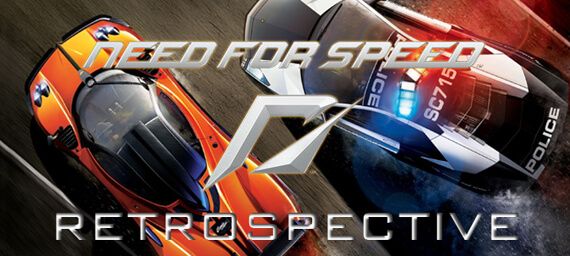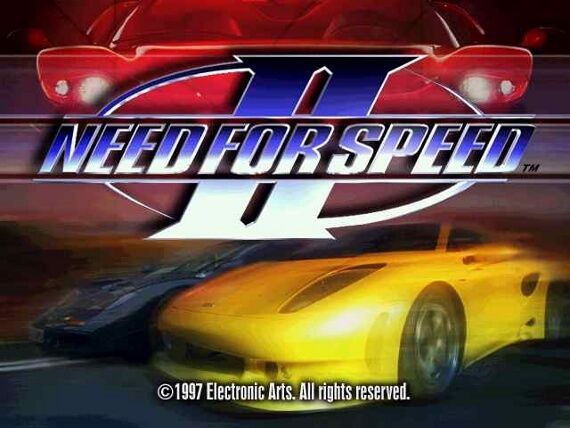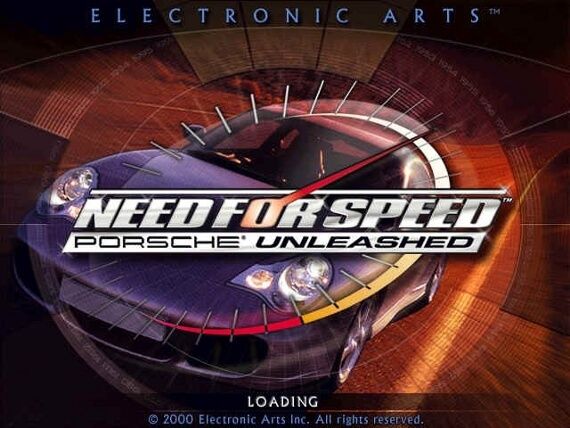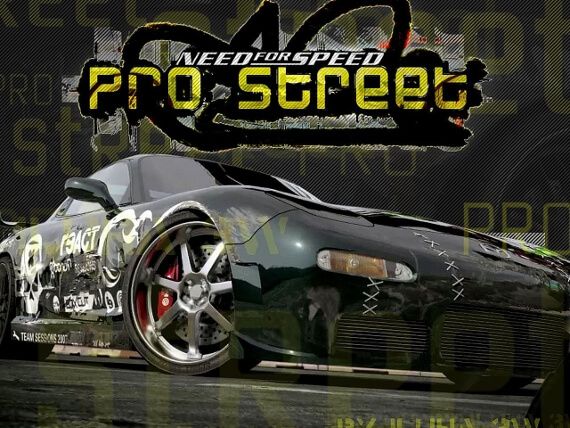The Need for Speed franchise has been going strong for 16 years, with 15 titles under it's belt including a free-to-play MMO and about 100 million copies sold worldwide. The latest title in the series, Need for Speed Hot Pursuit, is just around the corner and we would like to take you on a trip down memory lane to explore the origins of one of the most popular racing franchises in the industry.
Unlike other racing games such as Gran Turismo and Forza, the central theme of a NFS game will change with each title. In one game players will be out-running the cops, while in another title they'll be playing a cop undercover. One moment players can be illegal street racers and in the next they can be professional racers, taking part in drift and circuit competitions to gain sponsors.
While the main mechanic in the new Need for Speed Hot Pursuit focuses on the player being on either side of the law, it wasn't always like this in previous NFS titles. In fact, the series started out as a racing sim targeting car enthusiasts.
To see just how far this series has come take a look at our visual representation of the Need for Speed timeline. Hard to believe there were so many games.
1994 - Road & Track Presents: The Need for Speed
In an attempt to create a realistic racing sim, Electronic Arts partnered with Road & Track Magazine to create The Need for Speed. The game was first released on the 3DO and was later ported to the PlayStation, PC CD-ROM, and Sega Saturn. The game featured only nine cars, including the Porsche 911 Carrera, Mazda RX-7 and Lamborghini Diablo. The game also had audio history and commentary on each car.
Some fun features of the game was a secret tenth car called the Warrior which was propelled by a jet engine. There was also a very basic 'Pursuit' mode where all the cop had to do was pass your car in order to issue a ticket. After about three tickets you were arrested and the race was over.
1997 - Need for Speed II
This title was similar to the first, with car enthusiasts as the main audience. Audio commentary for each vehicle remained, however this time you could view the interior of each car with a 360 panoramic shot. There were also cheat codes to unlock more wacky vehicles, such as an outhouse, western style wagon and a green T-Rex. Many of the backdrop cars could also be utilized using the cheats.
1998 - Need for Speed III: Hot Pursuit
This is the beginning of the central theme which would be prominent in many future installments of the NFS series. The game's main focus was the police pursuit. EA ditched the sim-style racing of the previous two titles and went full arcade.
The A.I. was greatly improved over the past two games. Cops used spike strips, road blocks and sent special super cars if you evaded them too long. This was also the first game where you could tune your vehicle to alter the handling. I will jump in here and say that if you asked me for a top ten list of my favorite games of all time, NFS III: HP would definitely be in the top 5.
1999 - Need for Speed: High Stakes
High Stakes is the first in the series to bring improved physics and damage models to the cars. The damage also had an effect on the handling of your car and had to be repaired with in-game money. This money also was used to purchase upgrades and new cars.
The main feature of this game was the 'High Stakes' mode. In this mode, two players would race and the loser would lose their car. The game utilzed two memory cards–yours and your friend's–and would delete the car data off the losers card. It was a very interesting mechanic, however this was the only game that would ever use it.
2000 - Need for Speed: Porsche Unleashed
When Gran Turismo 3 A-Spec was released, gamers might recall how the game was missing one of the most iconic cars in history, the Porsche. Well EA snatched up the Porsche brand in an exclusivity deal and released Porsche Unleashed.
Even though the game focused on one car brand, it was well received. It had Porsche vehicles from the 1950s up until 2000 and had some of the best physics found in a racing game. EA also continues to hold exclusivity of the Porsche brand for the upcoming NFS: Hot Pursuit.
2002 - Need for Speed: Hot Pursuit 2
The first title developed by EA Black Box and the first NFS title to feature music from EA Trax. Trax is a system implemented in many of EA's sports franchises, which feature many mainstream artists from different genres of music.
The 'Hot Pursuit' mode and arcade-style racing from NFS III is back and this time the player can take the role of the police. Along with the spike strips and road blocks, the police also could call in a helicopter which would fire a high-powered flash bang, which would slow down vehicles.
2003 - Need for Speed: Underground
Capitalizing on the popularity of underground street racing scene magnified by the Fast and the Furious movies, NFS: Underground was released and is the first NFS game to introduce car body customizations. These mods would increase reputation points, which the player would use to purchase more cosmetic rewards.
This is the first NFS to also feature a story and brings in drifting and drag racing into the mix. People would think that with all this illegal street racing the cops would be out in full force, however there was no pursuit mode or cop chases of any kind included in this title.
2004 - Need for Speed: Underground 2
Underground 2 remained mostly unchanged from the first. Drifting was easier and involved multiple cars on the track. Players are now given an open world to drive around in, a first for the series. SUVs were also introduced, however they played a small role in the overall game and were only best utilized when racing other SUVs.
Some celebrity talent was brought in and your main contact in the game, Rachel is voiced by model Brooke Burke. The Underground games started the trend of having minor celebs in the acting roles of future NFS games, however the acting tended to be pretty bad. Which is probably one of the reasons why the new Hot Pursuit is leaving out the story.
One new feature was the 'Outrun Races'. When driving around the city the player could challenge other racers to highway battles. The racer who stays at least 1000ft ahead the longest wins.
2005 - Need for Speed: Most Wanted
This game marked the 10th Anniversary of Need for Speed and EA celebrated by releasing a limited 'Black Edition' of NFS: Most Wanted. This included extra races, cars and a behind-the-scenes DVD.
Most Wanted has two unique modes. 'Tollbooth', which is basically a timed checkpoint race where players would accumulate their access time at each checkpoint to make it across the finish line. The other mode is 'Speedtrap', where racers compete to get the highest accumulated sped at traffic cameras around the city.
After a brief hiatus the pursuit mode returns. This time cops can chase you during free roam and during career races. The difficulty of the police depends on your 'Heat Level'. The higher the level, the more aggressive the cops.
2006 - Need for Speed: Carbon
This is a direct sequel to NFS: Most Wanted and has a mechanic which could be called squad-based racing. Essentially you have a crew which each have their own special primary and secondary skills. These racers act as friendly a.i. drivers and perform tasks such as finding shortcuts or blocking opposing drivers so you can fly by.
Carbon is the first NFS to have modes exclusive to online play, one being 'Pursuit Knockout'. This mode is basically your standard knockout race with a fun twist. The racer who is last at the end of the lap doesn't get knocked out, but returns as a cop to take down the remaining racers. Kinda makes you feel bad for the last man standing.
The main selling point of Carbon was the "Autosculpt" feature. This allowed players to sculpt their body kits, though this was limited to specific kits.
2007 - Need for Speed: Pro Street
You take the role of a silent protagonist who was a former street racer trying to go legit in the pro-circuit. Gone are the free-roam aspects of the previous three NFS games, since in this game players are competing in a professional racing league. Four game modes: Drag, Grip, Speed and Drift, make up the meat of the gameplay, with Grip racing being your standard circuit racing.
Highly detailed damage models are included in this game and can have a serious impact on car performance. The Autosculpt feature returns, and players can now sculpt all body kits. They can then test them out in a wind tunnel.
Pro Street was a big course change in the franchise and was considered a slight disappointment compared to the previous titles.
2008 - Need for Speed: Undercover
Undercover sported the largest open-world of any NFS title before, and had a pursuit system similar to Most Wanted. The large open city didn't help its reputation as it's regarded as the weakest game in the series, due to lack of difficulty, poor acting and other technical issues.
The game had a large cast including singer Christina Milian, Maggie Q, Kurt Caceres and the brother of actress Jessica Alba, Joshua Alba. The story is reminiscent of the movie 2 Fast 2 Furious, where you play an undercover officer who has to infiltrate a crime syndicate by proving yourself behind the wheel.
Many felt the quality of Need for Speed took a large nose dive with this title, and EA would later reveal it was because they were overworking the developer, EA Black Box.
2009 - Need for Speed: Shift
EA takes another shot at simulation racing and attempts to steal some thunder from Forza Motorsport 3 with Need for Speed: Shift. This time car handling took a realistic turn, but could be tailored to a more arcade feel.
There was an emphasis on the in-car view. The interiors of the cars where highly-detailed and functional. Players could look around and utilize the side and rear-view mirrors. Players could also earn experience based on their driving style. There was no need to be courteous to other drivers since players are rewarded for aggressive as well as precision driving.
EA had finally redeemed itself for the failure of Underground, and gained high praise from critics and gamers.
2009 - Need for Speed: Nitro
In the same year as NFS: Shift, the Nintendo Wii and DS got their first exclusive Need for Speed title: Need for Speed: Nitro. The game sported cartoon-like graphics and arcade style racing making the game accessible to the large audience of the Nintendo consoles.
Nitro had real-life vehicles including the Dodge Charger, Nissan Skyline along with 30 other cars. Game modes included circuits, elimination races, drift challenges, drag races and time attacks. Rio de Janeiro, Cairo, Madrid, Singapore and Dubai made up the backdrops for Nitro.
An ability named 'Own It'" allowed the lead racer to paint the city red, or any color of their customizable graffiti-style tags along city walls. The feature was only cosmetic and added no benefits other than to let the other racers know who was in the lead.
Police were on hand to chase down racers and cause damage to their vehicles, which could then be repaired by power-ups spread out around the tracks.
2010 - Need for Speed World
This year EA released Need for Speed World, the first massively multiplayer racing title to sport the Need for Speed name. Available only for PC, NFS World originally allowed players to level up to 10 before being required to pay to unlock the full game. World went free-to-play and removed the level cap in September after passing 1 million subscribers.
NFS World currently has 30 vehicles and takes place in the fictional cities of Rockport and Palmont, which were introduced in Most Wanted and Carbon. It is rumored that EA will add the city of Bayview from Underground 2 at a later date. I wonder if they'll also bring back Brooke Burke?
The Need for Speed series has a long legacy behind it and it looks as if EA has learned from its mistakes and is ready to take the franchise to a whole new level. In our interview with Senior VP of EA Games Europe, Patrick Söderlund, he admits that the EA Black Box team was "mismanaged" and that two teams will now be responsible for releasing titles each year.
A longer development time can lead to higher quality, which is something this franchise seriously needed. Having two development teams could have two different types of NFS titles releasing in the near future. A 'Hot Pursuit' arcade-style racer and a sim-style racing title like Shift. Now that EA is aware what needs to be done, the future is looking a bit brighter for this long running racing series.
We here at Game Rant are incredibly excited for Need for Speed Hot Pursuit, especially with Criterion at the helm. Just check out our review to see our thoughts! The game launches today, November 16th, and remember to keep it checking the site and follow us on Twitter @gamerant for the latest Need for Speed news.




